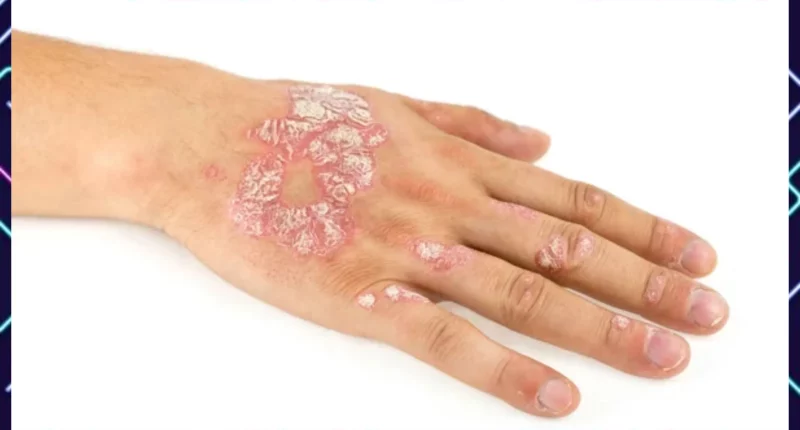Recent advances in understanding the etiopathogenesis of psoriasis have significantly improved treatment options, offering more targeted and effective therapies for managing this complex disease.
Psoriasis is a chronic skin disease that affects more than 125 million people worldwide, making it one of the most common autoimmune disorders.
Despite ongoing research and treatment advancements, medical professionals still don’t understand the underlying causes and mechanisms of less common psoriasis subtypes. Furthermore, many current therapies can cause serious side effects, and the condition frequently recurs after treatment is discontinued.
For these reasons, a better understanding of how psoriasis develops and progresses on a physiological level is pertinent for new research findings, therapeutic approaches, and expanding clinical treatment options.
About the review
In the present review, researchers elucidated the biological mechanisms underlying psoriasis development and described current treatment options and those undergoing clinical trials. The review also discussed the potential role of genetic indicators and biomarkers in early diagnosis and intervention.
Biological Pathways and Signaling Mechanisms in Psoriasis
Psoriasis is characterized by an influx of immune cells, including T helper 1 (Th1), Th17, and Th22 cells. These cells produce interleukin-22 (IL-22), which binds to IL-22 receptors on target cells and activates downstream signaling pathways in keratinocytes. This results in the production of antimicrobial proteins, inhibition of keratinocyte differentiation, and acanthosis, a hallmark of psoriasis. Tumor necrosis factor-alpha (TNF-α) may further enhance the effects of IL-22.
The tumor necrosis factor-interleukin 23-interleukin 17 axis plays a central role in psoriasis pathophysiology, particularly in plaque psoriasis. Dendritic cells (DCs) are the primary producers of interleukin 12 and interleukin 23, with ribonucleic acid (RNA) expression of p19 and p40 significantly increased in psoriasis lesions. IL-23 acts on T lymphocytes, particularly helper T [cluster of differentiation 4+ (CD4+)] cells, through a cell-surface receptor complex composed of transmembrane proteins IL-12R1 and IL-23R. IL-23 stimulates the production of interleukin-17, a key cytokine implicated in psoriasis pathophysiology. IL-17A, C, and F are elevated in psoriasis lesions and contribute to the disease.
TNF-α exerts its effects on target cells primarily through two types of TNF receptors: TNFRI (p55) and TNF-RII (p75). It significantly reduces plasmacytoid dendritic cell (pDC) IFN-α secretion, promoting pDC maturation into a more conventional dendritic cell phenotype capable of producing IL-23. TNF-α also interacts with IL-17A to co-regulate psoriasis-related cytokines and keratinocyte genes, influencing keratinocyte function.
C-C Motif Chemokine Ligand 20 (CCL20), also known as macrophage inflammatory protein 3α (MIP-3α), is a critical chemokine in psoriasis; however, it specifically binds to the C-C chemokine receptor 6 (CCR6). Scratching or trypsinization can cause keratinocytes in psoriatic lesions to synthesize CCL20 and release CCR6+ Th17 cells, which produce IL-17A and promote CCL20 expression.
Metabolic alterations, particularly those involving the regulation of keratinocytes and associated immune cells, have been implicated in psoriasis pathogenesis. Targeting metabolic pathways may hold promise for psoriasis management.
Targeted Therapies for Psoriasis
The primary goals of psoriasis treatment are to reduce inflammation, clear skin lesions, improve quality of life, and prevent complications. Treatment strategies aim to eliminate lesions, reduce itching, and enhance the patient’s quality of life.
Put differently, targeted therapies for psoriasis have revolutionized the management of this chronic, inflammatory skin condition. These treatments are designed to specifically target the underlying immunological pathways that drive the development and progression of psoriatic lesions. By precisely targeting key cytokines and cells involved in the pathogenesis of psoriasis, targeted therapies offer a more effective and safer alternative to traditional systemic therapies.
Current Treatment Options
Psoriasis treatment options vary based on the severity of the condition. For mild cases, topical corticosteroids, calcipotriol, and their combination are often effective. These topical treatments help to reduce inflammation and alleviate symptoms such as redness, itching, and scaling. Topical corticosteroids are particularly useful for localized areas of psoriasis, while calcipotriol is effective for larger areas and can be used in combination with other treatments.
In cases of moderate to severe psoriasis that do not respond to topical treatments, oral medications are used. These include retinoids, cyclosporine, and methotrexate. Methotrexate has been approved by the Food and Drug Administration (FDA) for over 50 years and is widely used to manage moderate to severe psoriasis. It is effective in reducing inflammation and slowing down the rapid growth of skin cells that characterize psoriasis.
Cyclosporine is also used to manage severe psoriasis, but it is associated with various adverse effects, including renal toxicity. This medication is typically reserved for severe cases where other treatments have failed to provide adequate relief. However, its use is limited due to the potential risks it poses to kidney function.
Acitretin is used to manage pustular and erythrodermic psoriasis, which are severe forms of the condition characterized by pus-filled blisters and widespread redness of the skin. While acitretin is effective in managing these severe forms of psoriasis, it is contraindicated for pregnant individuals due to its teratogenicity, meaning it can cause birth defects if taken during pregnancy. Therefore, it is crucial for individuals taking acitretin to use effective birth control measures and to consult their healthcare provider about any potential risks or side effects.
Phototherapy
Phototherapy, including psoralen and ultraviolet-A (PUVA), narrow-band UVB (NB-UVB), and wide-band UVB, is an essential therapeutic option for moderate to severe psoriatic lesions.
Biologics
Biologics are a class of targeted therapies that are derived from living organisms or their products. These medications are designed to target specific components of the immune system, such as cytokines or immune cells, that play a crucial role in the development of psoriasis. Biologics are typically administered via injection or infusion and have demonstrated significant efficacy in clearing skin lesions and improving quality of life for patients with moderate to severe psoriasis.
Some of the most commonly used biologics for psoriasis treatment include:
Tumor Necrosis Factor (TNF) inhibitors: These medications target the proinflammatory cytokine TNF-alpha, which is known to play a key role in the pathogenesis of psoriasis. Examples include etanercept, infliximab, adalimumab, and certolizumab pegol.
Interleukin (IL)-17 inhibitors: These medications target the proinflammatory cytokine IL-17, which is involved in the recruitment and activation of immune cells in psoriatic lesions. Examples include secukinumab, ixekizumab, and brodalumab.
Interleukin (IL)-23 inhibitors: These medications target the p19 subunit of IL-23, a cytokine that is essential for the differentiation and maintenance of Th17 cells, which are key drivers of psoriatic inflammation. Examples include guselkumab, tildrakizumab, and risankizumab.
Small Molecule Inhibitors
Small molecule inhibitors are a class of targeted therapies that are designed to interfere with specific intracellular signaling pathways involved in the pathogenesis of psoriasis. These medications are typically taken orally and have demonstrated efficacy in the treatment of moderate to severe psoriasis. One example of a small molecule inhibitor used for psoriasis treatment is apremilast, which inhibits phosphodiesterase 4 (PDE4), an enzyme involved in the regulation of inflammatory responses.
Combination Therapies
In some cases, targeted therapies may be used in combination with other treatments, such as topical therapies or phototherapy, to achieve better outcomes and minimize the risk of adverse effects. Combination therapies can be particularly useful for patients with severe or treatment-resistant psoriasis.
Study Source










